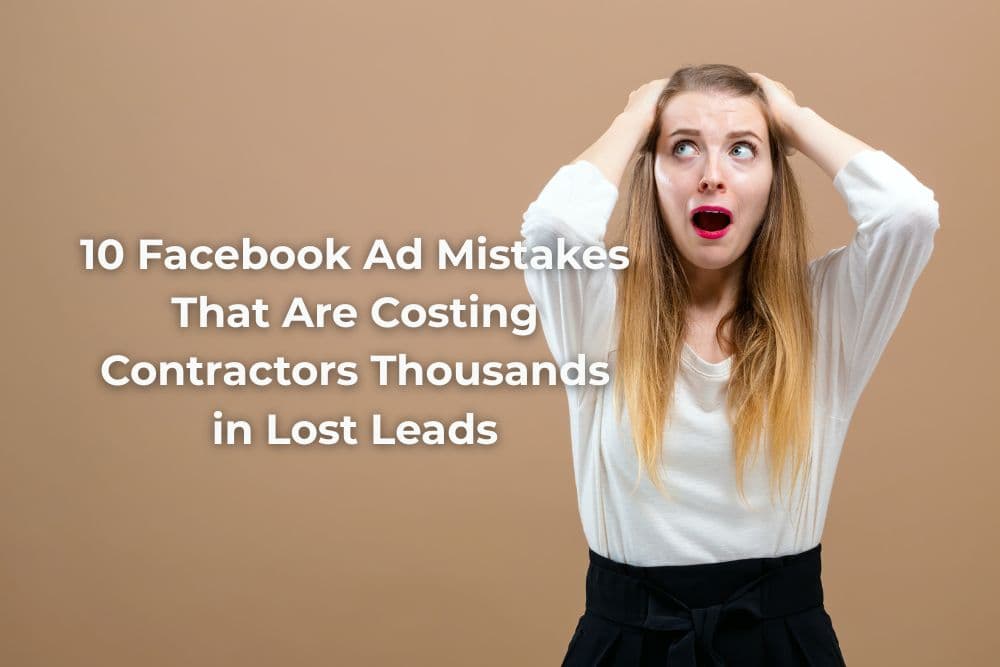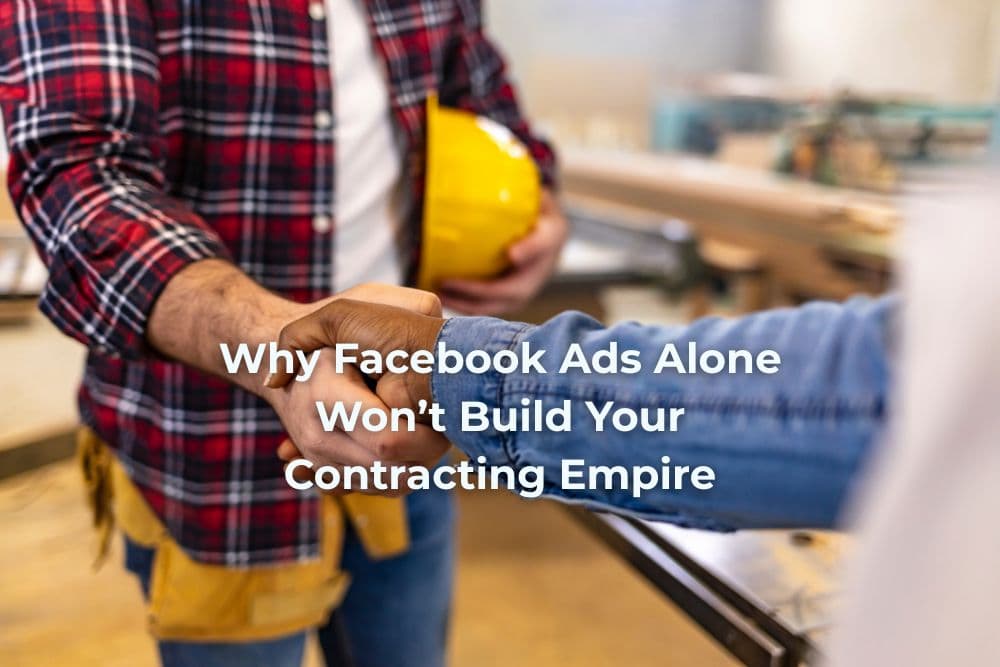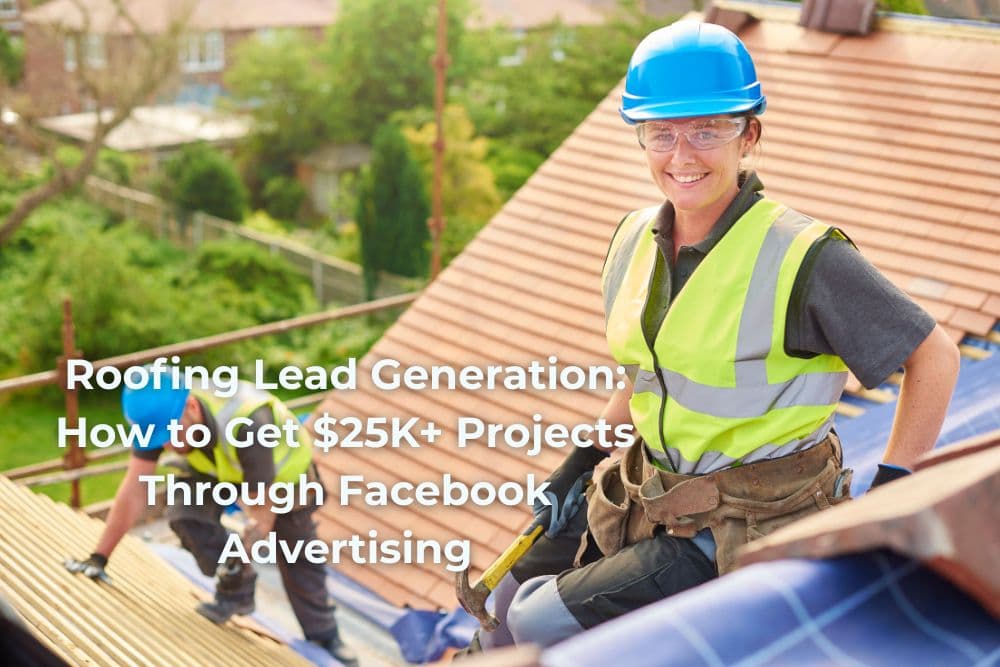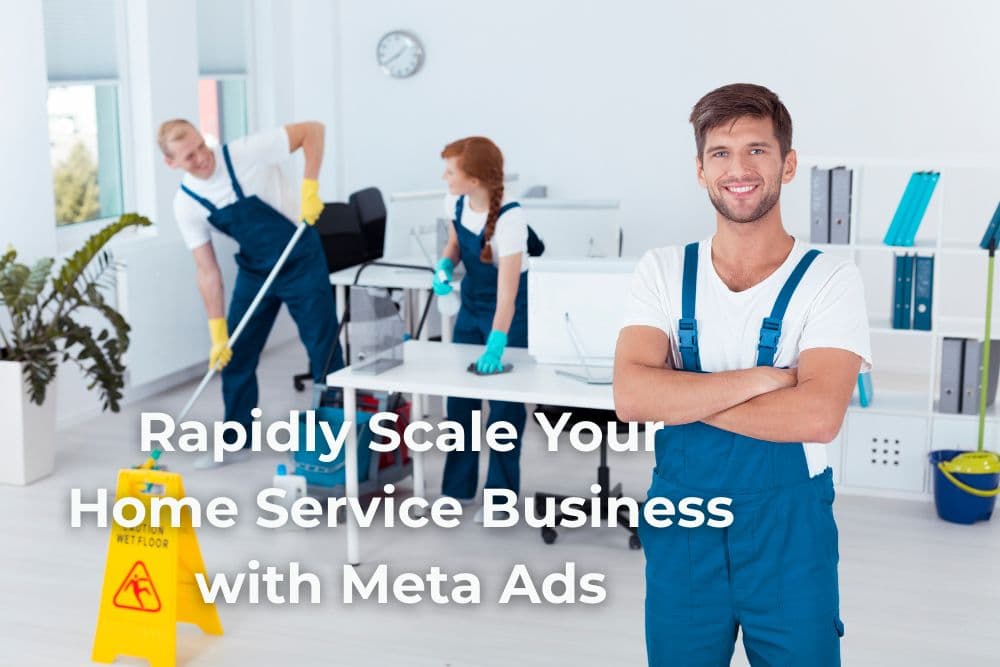Support center (714) 707-2483
10 Facebook Ad Mistakes That Are Costing Contractors Thousands in Lost Leads

10 Facebook Ad Mistakes That Are Costing Contractors Thousands in Lost Leads
By Ryan Goering, Founder of BaaDigi | Published: July 22, 2025 | Reading Time: 14 minutes
Are your Facebook ads burning through budget without generating quality leads? You're not alone. Most contractors waste 30-50% of their advertising budget on easily preventable mistakes that kill campaign performance before it even starts.
With 98.5% of Facebook users accessing the platform via mobile devices and Facebook ads averaging a 9.21% conversion rate, the potential for contractor lead generation is massive. But only if you avoid the critical mistakes that plague most campaigns.
This guide reveals the 10 most expensive Facebook advertising mistakes contractors make—and exactly how to fix each one to dramatically improve your lead generation results.
The High Cost of Facebook Ad Mistakes in 2025
Before diving into specific mistakes, let's understand the stakes. According to Meta's latest data, total Facebook ad revenue reached $135 billion in 2025, with 93% coming from mobile ads. For contractors, this represents both massive opportunity and significant risk.
The reality for most contractors:
- Average Facebook Lead Ads cost per lead: $21.98 across industries
- Home improvement businesses see varied performance based on setup quality
- Mobile-friendly video ads have 12.3% lower conversion costs than non-optimized ads
When campaigns are set up incorrectly, these costs can easily double or triple, turning profitable lead generation into a budget drain.
Mistake #1: Targeting Audiences That Are Too Broad or Too Narrow
The Problem
One of the most common Facebook ad mistakes is misaligned audience targeting. Contractors often make one of two critical errors:
Too Broad: Targeting everyone in a 50-mile radius interested in "home improvement"
- Results in irrelevant clicks and wasted spend
- Dilutes message effectiveness
- Increases cost per lead significantly
Too Narrow: Targeting only homeowners aged 45-55 who like "This Old House" and live within 10 miles
- Severely limits reach and impressions
- Creates bidding competition issues
- May not reach sufficient volume for Facebook's algorithm to optimize
The Fix: Strategic Audience Layering
For Roofing Contractors:
Primary Audience:
- Age: 35-65
- Homeowners in service area
- Household income: $75,000+
- Interests: Home improvement, home ownership
Secondary Audience:
- Age: 30-70
- Recent home purchasers (last 2 years)
- Weather-affected areas (storm damage)
- Lookalike audience from past customers (1-3%)
For Remodeling Contractors:
Primary Audience:
- Age: 35-55
- Homeowners with home equity
- Household income: $100,000+
- Life events: New baby, retirement planning
Secondary Audience:
- Home value: Top 25% in area
- Interests: Interior design, home renovation shows
- Behaviors: Luxury shoppers, home improvement spending
Best Practices:
- Start with broader audiences (2-5 million people) for new campaigns
- Let Facebook's algorithm find your ideal customers within that group
- Use Core Audiences to define clear but scalable segments
- Layer in Lookalike Audiences seeded from high-intent customer lists
- Test audience overlap using Facebook's Audience Overlap tool
Mistake #2: Ignoring Mobile Optimization (98.5% of Traffic)
The Problem
With 98.5% of Facebook users accessing via mobile devices and fewer than 5% using mobile web browsers, mobile optimization isn't optional—it's essential.
Yet many contractors still create ads optimized for desktop viewing:
- Horizontal video formats that don't fill mobile screens
- Text that's too small to read on phones
- Landing pages that aren't mobile-responsive
- Click-to-call buttons buried in small print
The cost: Mobile-friendly vertical video ads show 12.3% lower conversion costs than non-mobile-optimized ads.
The Fix: Mobile-First Creative Strategy
Video Ad Specifications:
- Format: 9:16 vertical (fills entire mobile screen)
- Duration: 15-30 seconds maximum
- Text Overlay: Large, legible fonts (minimum 24pt)
- Sound: Design for sound-off viewing with captions
Image Ad Requirements:
- Size: 1080 x 1080 minimum resolution
- Text: Maximum 20% of image area
- Call-to-Action: Prominent, easy to tap on mobile
Landing Page Mobile Optimization:
- Load Speed: Under 3 seconds (crucial for conversions)
- Click-to-Call: Large, prominent phone buttons
- Forms: Maximum 3 fields for mobile completion
- Navigation: Thumb-friendly button sizes (minimum 44px)
Implementation Checklist:
☐ Test all ads on mobile device before publishing
☐ Use vertical video formats for Stories and Reels
☐ Include captions/text overlay for sound-off viewing
☐ Ensure landing pages load under 3 seconds on mobile
☐ Make phone numbers clickable for instant calling
☐ Test form completion on various mobile devices
Mistake #3: Wrong Campaign Objectives for Lead Generation
The Problem
Choosing the wrong campaign objective is like using a screwdriver when you need a hammer. Facebook optimizes your campaign based on the objective you select, so wrong objectives produce wrong results.
Common Contractor Mistakes:
- Using "Traffic" objective when you want leads
- Selecting "Engagement" to build awareness
- Choosing "Reach" thinking it's better for local businesses
- Using "Conversions" without proper pixel setup
Facebook's algorithm learns from your objective choice and optimizes accordingly. Select "Traffic" and you'll get clicks but not necessarily people interested in hiring contractors.
The Fix: Objective Alignment Strategy
For Lead Generation Campaigns:
Primary Objective: Leads
- Use Facebook Lead Ads for frictionless form completion
- Pre-filled forms increase conversion rates
- Mobile-optimized native experience
Secondary Objective: Conversions
- When directing traffic to your website
- Requires proper Facebook Pixel setup
- Track "Contact Form Submissions" or "Phone Calls"
For Awareness Campaigns:
Primary Objective: Reach
- Building local brand awareness
- Showcasing completed projects
- Seasonal service reminders
Secondary Objective: Video Views
- Demonstrating work quality and process
- Building trust through testimonials
- Educational content marketing
Campaign Structure Best Practices:
- One objective per campaign - never mix objectives
- Match ad creative to objective - lead ads need clear value propositions
- Align landing pages with objective - traffic campaigns need conversion-optimized pages
- Set up proper tracking for conversion objectives
Budget Allocation by Objective:
- Lead Generation: 60% of total ad budget
- Retargeting: 25% of total ad budget
- Awareness/Video Views: 15% of total ad budget
Mistake #4: Facebook Pixel Tracking Errors and Setup Issues
The Problem
According to Meta's 2025 data, over 50% of browser-side conversions now go untracked due to privacy regulations and cookie restrictions. Without proper tracking, you're flying blind.
Common Tracking Mistakes:
- Facebook Pixel not installed correctly
- Missing Conversions API setup (critical for iOS 14.5+ compliance)
- Tracking wrong events or no events at all
- Duplicate event firing causing data pollution
- Not excluding internal traffic from conversion data
The Cost: Without accurate tracking, Facebook can't optimize your campaigns, leading to 30-50% higher cost per lead.
The Fix: Comprehensive Tracking Setup
Step 1: Pixel Installation Verification
<!-- Correct Pixel Installation -->
<script>
!function(f,b,e,v,n,t,s)
{if(f.fbq)return;n=f.fbq=function(){n.callMethod?
n.callMethod.apply(n,arguments):n.queue.push(arguments)};
if(!f._fbq)f._fbq=n;n.push=n;n.loaded=!0;n.version='2.0';
n.queue=[];t=b.createElement(e);t.async=!0;
t.src=v;s=b.getElementsByTagName(e)[0];
s.parentNode.insertBefore(t,s)}(window,document,'script',
'https://connect.facebook.net/en_US/fbevents.js');
fbq('init', 'YOUR_PIXEL_ID');
fbq('track', 'PageView');
</script>
Step 2: Essential Events to Track
// Lead form submission
fbq('track', 'Lead');
// Phone number clicks
fbq('track', 'Contact');
// Service page views
fbq('track', 'ViewContent');
// Quote request form
fbq('track', 'InitiateCheckout');
// Project completion (for retargeting)
fbq('track', 'Purchase', {value: 0.00, currency: 'USD'});
Step 3: Conversions API Setup
Implementation Options:
- Direct Integration (for developers)
- Partner Integration (Zapier, other platforms)
- Google Tag Manager Server-Side (recommended for most contractors)
Testing Your Setup:
- Use Facebook Pixel Helper Chrome extension
- Check Events Manager for real-time event data
- Test conversion tracking with live form submissions
- Verify mobile tracking functionality
Mistake #5: Generic Ad Creative That Doesn't Showcase Work Quality
The Problem
Generic stock photos and templated ad copy kill conversion rates. Contractors have a unique advantage—their work is highly visual and trust-dependent. Yet many waste this advantage with generic creative.
Common Creative Mistakes:
- Using stock photos instead of actual project photos
- Generic copy that could apply to any contractor
- No before/after transformations shown
- Missing local trust signals and credentials
- Poor image quality that doesn't showcase work properly
The Fix: Visual Storytelling That Converts
Photo Creative Best Practices:
Before/After Galleries:
- Split-screen format showing transformation
- Same angle for before/after consistency
- High-resolution images (minimum 1080px)
- Include project details in overlay text
Process Documentation:
- Time-lapse video of work in progress
- Team photos showing professionalism
- Equipment and material quality shots
- Customer interaction and satisfaction moments
Video Creative Framework:
0-3 seconds: Hook with dramatic before/after reveal
4-10 seconds: Show work process and team professionalism
11-15 seconds: Customer testimonial or result highlight
16-20 seconds: Clear call-to-action with contact information
Copy That Converts:
Headline: "Transform Your [Specific Space] in [Timeframe]"
Example: "Transform Your Outdated Kitchen in 3 Weeks"
Body Copy Structure:
1. Problem identification: "Tired of your cramped, outdated kitchen?"
2. Solution positioning: "We specialize in complete kitchen transformations"
3. Social proof: "500+ Orange County kitchens completed"
4. Risk reduction: "Licensed, insured, 5-year warranty"
5. Clear CTA: "Get your free design consultation today"
Local Trust Signals:
- Years in business in specific area
- Local business certifications and licenses
- BBB rating and local reviews
- Community involvement and sponsorships
- Local landmark references in images
Mistake #6: Bidding Strategy Errors That Waste Budget
The Problem
Many contractors either overpay for clicks by bidding too aggressively or underpay and get no delivery by bidding too conservatively. Without understanding Facebook's auction system, budgets get wasted quickly.
Common Bidding Mistakes:
- Setting manual bids too high or too low
- Not understanding bid cap vs. cost cap
- Spreading budget too thin across too many ad sets
- Not allowing sufficient budget for Facebook's algorithm to optimize
- Constantly changing bids before getting sufficient data
The Fix: Strategic Bidding Approach
Budget Recommendations by Business Size:
Small Contractors ($1,000-3,000/month):
Daily Budget: $35-100
- Start with Lowest Cost bidding
- Minimum $50 daily budget per ad set
- Focus on 1-2 core audiences initially
- Allow 7-14 days for optimization
Medium Contractors ($3,000-8,000/month):
Daily Budget: $100-270
- Use Cost Cap bidding when target CPL known
- Test multiple audiences simultaneously
- Allocate 60% to proven audiences, 40% to testing
- Implement Campaign Budget Optimization
Large Contractors ($8,000+/month):
Daily Budget: $270+
- Advanced bidding strategies (Value Optimization)
- Broad audience testing with significant budgets
- Sophisticated retargeting funnels
- Cross-platform campaign coordination
Bidding Strategy Selection Guide:
Lowest Cost: New campaigns, unknown performance metrics
Cost Cap: Established campaigns with target cost per lead
Bid Cap: Maximum control over auction participation
Value Optimization: Focus on higher-value customers
Budget Optimization Rules:
- 50 optimization events minimum per ad set per week
- Campaign Budget Optimization for multiple ad sets
- 20% rule: Don't exceed 20% budget increases per day
- Data collection: Allow 3-7 days before major changes
Mistake #7: Not Testing Ad Creative Regularly (Creative Fatigue)
The Problem
Facebook users see thousands of ads daily, making creative fatigue a constant threat. Even high-performing ads lose effectiveness over time as audiences become oversaturated.
Signs of Creative Fatigue:
- Declining click-through rates over time
- Increasing cost per lead
- Decreasing relevance scores
- Comments indicating ad overexposure
- Frequency scores above 3.0
Research shows creative should be refreshed every 7-10 days to maintain engagement.
The Fix: Systematic Creative Refresh Strategy
Creative Testing Schedule:
Week 1-2: Launch initial creative variations (3-4 different ads)
Week 3: Analyze performance, pause bottom 25%
Week 4: Create new variations based on top performers
Week 5: Launch seasonal/trending creative variations
Week 6: Refresh all creative with new projects/testimonials
A/B Testing Framework:
Test Elements (one at a time):
1. Headlines: Benefit-focused vs. Problem-focused
2. Images: Before/after vs. Process vs. Team
3. Video thumbnails: Different opening frames
4. Call-to-action buttons: "Learn More" vs. "Get Quote"
5. Ad copy length: Short vs. detailed descriptions
Creative Variation Strategy:
Format Variations:
- Single image ads
- Carousel showcasing multiple projects
- Video testimonials
- Before/after transformation videos
- Behind-the-scenes process content
Messaging Variations:
- Problem-solving approach: "Roof leak keeping you awake?"
- Benefit-focused approach: "Increase your home value 15%"
- Social proof approach: "Join 500+ satisfied Orange County homeowners"
- Urgency approach: "Limited fall installation slots available"
Creative Performance Monitoring:
- Track relevance score trends over time
- Monitor frequency distribution across audiences
- Analyze engagement rate changes
- Set up automated rules for underperforming creative
Mistake #8: Poor Landing Page Experiences That Kill Conversions
The Problem
You can have perfect Facebook ads, but if your landing page doesn't convert, you're wasting money. Studies show that mobile landing pages need to load under 3 seconds or users abandon them.
Common Landing Page Mistakes:
- Slow loading speeds (especially on mobile)
- Ad message doesn't match landing page content
- Too many form fields requiring extensive information
- Missing trust signals and social proof
- No clear value proposition or next steps
- Poor mobile user experience design
The Fix: Conversion-Optimized Landing Pages
Mobile-First Design Requirements:
Technical Specifications:
- Load time: Under 3 seconds on mobile
- Responsive design: Adapts to all screen sizes
- Touch-friendly: Buttons minimum 44px target size
- Readable text: Minimum 16px font size
- Fast forms: Auto-fill capabilities where possible
Landing Page Structure for Contractors:
Above the Fold (visible without scrolling):
1. Headline matching ad message
2. Subheading with clear value proposition
3. Hero image showing work quality
4. Lead capture form (3 fields maximum)
5. Trust signals (licenses, insurance, BBB)
Below the Fold:
6. Before/after project gallery
7. Customer testimonials with photos
8. Service area map
9. Process explanation (3-4 steps)
10. Additional trust signals and guarantees
Form Optimization for Mobile:
Essential Fields Only:
- Name
- Phone number
- Email address
- Service needed (dropdown)
- Project timeline (optional)
Advanced Features:
- Auto-fill from device data
- Progressive profiling (ask more later)
- Conditional logic (show relevant fields only)
- Mobile-optimized input types
Trust Signal Hierarchy:
- Professional licenses and insurance
- BBB rating and local business certification
- Years in business and projects completed
- Customer reviews and ratings
- Industry associations and awards
- Warranties and guarantees offered
Mistake #9: Failing to Follow Up on Leads Quickly
The Problem
Speed matters in contractor lead generation. Research shows that leads contacted within 5 minutes are 21x more likely to convert than those contacted after 30 minutes. Yet many contractors treat Facebook leads as lower priority.
Common Follow-Up Mistakes:
- Waiting hours or days to contact Facebook leads
- Using generic follow-up messages
- No systematic lead nurturing process
- Treating Facebook leads differently than referrals
- Missing leads that come in after business hours
The Fix: Rapid Response System
Immediate Response Protocol:
0-5 Minutes: Automated text/email confirmation
- "Thanks for requesting info about [service]"
- "Expect a call from [Name] within 15 minutes"
- Include direct phone number for immediate contact
5-15 Minutes: Personal phone call
- Live person, not voicemail
- Reference specific service requested
- Qualify budget and timeline immediately
- Schedule in-person consultation if qualified
1 Hour: Follow-up email with portfolio
- Relevant project examples
- Customer testimonials
- Next steps clearly outlined
After-Hours Lead Management:
Evening/Weekend Automation:
- Immediate auto-response acknowledging request
- "We'll call you first thing Monday morning"
- Provide emergency contact for urgent needs
- Send portfolio email within 1 hour
Next Business Day Protocol:
- Call within first hour of business
- Reference time they submitted request
- Acknowledge any urgency mentioned
Lead Scoring and Prioritization:
High Priority (call immediately):
- Emergency services needed
- Large project budgets ($10,000+)
- Ready to start within 30 days
- Multiple service interests
Medium Priority (call within 2 hours):
- Planning phase projects
- Moderate budgets ($3,000-10,000)
- Timeline 1-6 months
Low Priority (email first, call within 24 hours):
- Information gathering only
- Very small projects
- No specific timeline mentioned
Mistake #10: Not Integrating with CRM Systems
The Problem
Without proper CRM integration, Facebook leads often get lost, duplicated, or receive inconsistent follow-up. Manual lead management becomes impossible to scale and track effectively.
Common CRM Integration Mistakes:
- Manually copying lead information from Facebook
- No lead source tracking or attribution
- Inconsistent follow-up processes across lead sources
- No automated nurturing sequences for unconverted leads
- Missing opportunity to create lookalike audiences from converted customers
The Fix: Automated Lead Management
CRM Integration Options:
Native Integrations (Recommended):
- Salesforce: Direct Facebook Lead Ads connection
- HubSpot: Automated lead import and scoring
- Pipedrive: Real-time lead sync and pipeline management
- Zoho: Comprehensive business automation
Third-Party Solutions:
- Zapier: Connect Facebook to 3,000+ apps
- Microsoft Power Automate: Enterprise workflow automation
- LeadsBridge: Specialized Facebook lead integration
Automated Workflow Setup:
Lead Capture:
1. Facebook Lead Ad submission
2. Instant CRM creation with source tagging
3. Lead scoring based on form responses
4. Assignment to appropriate sales rep
5. Automated follow-up sequence initiation
Lead Nurturing:
1. Welcome email series (5-7 emails over 2 weeks)
2. Educational content based on service interest
3. Local project showcases and testimonials
4. Seasonal service reminders
5. Re-engagement campaigns for cold leads
Customer Lifecycle:
1. Project completion feedback request
2. Review generation automation
3. Referral program enrollment
4. Maintenance service reminders
5. Upsell opportunity identification
Data Tracking and Analysis:
Essential Metrics:
- Lead source attribution (Facebook vs. other channels)
- Cost per lead by campaign and ad set
- Lead to customer conversion rate
- Customer lifetime value by source
- Return on ad spend (ROAS) calculation
Monthly Reporting:
- Facebook lead volume and quality trends
- Conversion rate optimization opportunities
- Budget allocation recommendations
- Audience performance analysis
How to Audit Your Current Facebook Ads for These Mistakes
Use this comprehensive checklist to identify which mistakes are costing you leads and budget:
Targeting Analysis:
☐ Audience size between 1-10 million people
☐ Using both interest and behavioral targeting
☐ Lookalike audiences from customer data
☐ Excluding past customers and employees
☐ Geographic targeting matches service area exactly
Mobile Optimization Check:
☐ All creative designed for mobile-first viewing
☐ Video content in vertical (9:16) format
☐ Landing pages load under 3 seconds on mobile
☐ Forms optimized for mobile completion
☐ Phone numbers clickable for instant calling
Campaign Structure Review:
☐ Campaign objectives align with business goals
☐ Lead generation campaigns use Lead Ads objective
☐ One objective per campaign (no mixing)
☐ Sufficient budget for algorithm optimization
☐ Campaign Budget Optimization enabled
Tracking Verification:
☐ Facebook Pixel installed and firing correctly
☐ Conversions API implemented for iOS compliance
☐ Essential events tracked (leads, calls, page views)
☐ Custom conversions set up for important actions
☐ Test purchases/leads tracked accurately
Creative Performance Audit:
☐ Using actual project photos (not stock images)
☐ Before/after content prominently featured
☐ Local trust signals included in creative
☐ Creative refresh schedule in place
☐ A/B testing different formats and messages
Follow-Up System Check:
☐ Leads contacted within 15 minutes during business hours
☐ After-hours auto-response system in place
☐ CRM integration capturing all Facebook leads
☐ Lead scoring and prioritization system active
☐ Automated nurturing sequences for unconverted leads
The Bottom Line: Fix These Mistakes to Transform Your Results
Facebook advertising success for contractors isn't about having the biggest budget—it's about avoiding costly mistakes that drain your investment. By addressing these 10 critical errors, contractors typically see:
- 30-50% reduction in cost per lead
- 2-3x improvement in lead quality
- Significantly higher conversion rates
- Better return on advertising investment
The contractors who succeed with Facebook advertising in 2025 aren't necessarily the most tech-savvy—they're the ones who systematically eliminate these performance killers and focus on fundamentals that drive results.
Get Your Free Facebook Ads Audit
Are these mistakes costing your contracting business qualified leads and wasted ad spend? BaaDigi's Facebook advertising specialists will conduct a comprehensive audit of your current campaigns and identify exactly which mistakes are hurting your performance.
Your free audit includes:
- ✅ Complete campaign structure analysis
- ✅ Mobile optimization assessment
- ✅ Tracking and attribution review
- ✅ Creative performance evaluation
- ✅ Lead follow-up process audit
- ✅ Custom recommendations for your business
During your audit, we'll uncover:
- Hidden budget waste in your current campaigns
- Missed opportunities for better targeting
- Creative optimization strategies for your specific trade
- Integration improvements for seamless lead management
- Competitive advantages you can implement immediately
Don't let another month of Facebook advertising budget go to waste. Schedule your free audit today and discover exactly how to transform your Facebook ads into a reliable lead generation system.
About the Author
Ryan Goering, Founder & CEO of BaaDigi
Ryan Goering began his career serving in the United States Marine Corps, where he traveled to 24 countries in 4 years and developed a global perspective on business operations. This experience led to a successful career in marine sales, where he became one of the top-performing sales consultants on the West Coast, representing world-class boat builders at national and international shows.
His transition from hands-on sales to digital marketing was driven by a passion for measurable results and operational efficiency. Today, Ryan leads both BaaDigi and Creactive Inc., specializing in B2C lead generation for home services companies with an emphasis on remodelers and general contractors. He also provides B2B lead generation for Managed Service Providers (MSPs).
"Where most marketing efforts create noise, I build systems that create pipeline. My unique advantage is blending a background in real-world sales with data-driven digital marketing."
Ryan's expertise spans SEO, email marketing, paid advertising, and conversion optimization, with a focus on engineering lead generation systems that deliver predictable ROI for service-based businesses.
Connect with Ryan:
- LinkedIn: https://www.linkedin.com/in/ryan-goering-5687968/
- Company: www.baadigi.com
Ready to fix these costly Facebook advertising mistakes and start generating consistent, high-quality leads? Contact BaaDigi today for your free Facebook Ads audit and discover how to transform your campaigns into a reliable growth engine.
Schedule Your Free Facebook Ads Audit:
- Phone: (714) 707-2483
- Email: Contact BaaDigi
- Free Audit: Get Your Campaign Analysis
- Facebook Ads Services: Learn About Our Solutions
Stop wasting money on Facebook ads that don't convert. Contact BaaDigi's Facebook advertising experts today and start generating the quality leads your business deserves.





